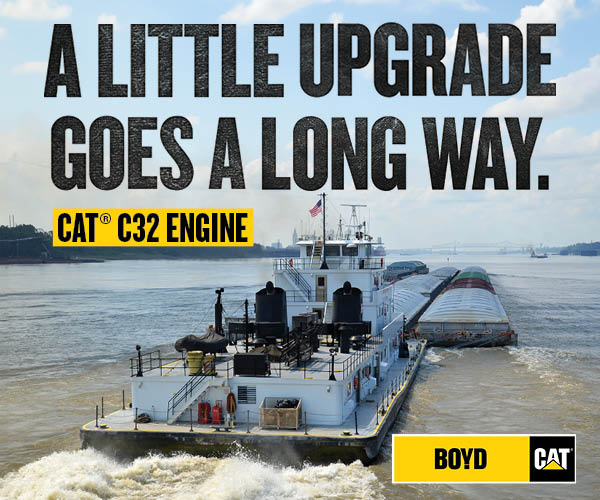America’s Infrastructure Scores Passing Grade, Inland Waterways Gets C-
The American Society of Civil Engineers (ASCE) released its latest Infrastructure Report Card on March 25. While ports overall earned a B, dams and levees got only a D-plus, and bridges were upgraded to a C. For the first time since the report card was first issued in 1998, though, no categories were rated D-minus. The nation’s aggregate infrastructure got a C grade overall.
On the inland waterways, which earned a C-minus, the report noted that, “while federal funding has increased in recent years, … a backlog persists with $7.5 billion in construction projects and ongoing lock closures.”
Tracy Zea, president and CEO of Waterways Council Inc. (WCI), said, “ASCE gave the inland waterways a D-plus grade in its 2021 report card, so to receive a C- in the 2025 report card means some progress has been made. That progress, from WCI’s view, is in the funding for the Army Corps of Engineers that Congress has been allocating, as well as earmarks for priority navigation projects to bring them online at a faster rate. Operations & Maintenance programmatic funding has also been at historic levels over the last several fiscal years. That has helped with dredging in low and high water, and for channel maintenance.
“Where there needs to be improvement is in the Corps’ delivery of key projects, and we hope to see improved efficiency in a number of areas ahead–earlier contract involvement, streamlined communication with all entities and consideration of different funding mechanisms such as the military contracting model for mega projects.”
The report credits the 2021 Infrastructure Investment and Jobs Act with some progress in correcting deficiencies noted in earlier report cards.
“For the first time since 1998, no report card categories were rated D-minus,” the report stated. “Among the 18 categories assessed, eight saw grade increases. Many of those categories had been chronically stuck at D-minus or D for years.
“As a result, nearly half of the grades are increasing for the 18 categories we assess in this 2025 Report Card for America’s Infrastructure. This forward momentum is due in large part to the actions of the federal government in partnership with state and local governments and the private sector.”
But the report cautions that this progress, which partly addressed decades of neglect and underfunding, is only the beginning of what needs to be done and warns against Congress “snapping back” to levels of infrastructure investments prior to the recent surge.
“Although evidence points to improvements throughout infrastructure’s system-of-systems, nine categories remained within the D range—a clear sign that more needs to be done to improve the health of America’s built environment,” the report stated. “Continued—and in some cases, increased—investment is necessary despite recent resources slowing the growth of America’s infrastructure investment gap. Reducing federal and state investment levels, or delaying that support, will escalate the costs and risks of an aging infrastructure system, a scenario American families and businesses cannot afford. Infrastructure investments must be made with consideration of a project’s full life cycle, including the impact of more frequent extreme weather.”
Founded in 1852, ASCE is the country’s oldest national civil engineering organization, representing more than 160,000 civil engineers in private practice, government, industry and academia dedicated to advancing the science and profession of civil engineering and protecting public health, safety and welfare.
In 1998, ASCE issued the first of what became a regular series of reports, known as the Report Card for America’s Infrastructure, roughly every four years.
“For more than two decades, the message behind the unflattering grades was consistent: federal, state and local governments, in addition to the private sector, had not been prioritizing our interdependent infrastructure systems,” ASCE stated. “That message grew louder with each evaluation, through our most recent Report Card release in early 2021.”
The full report can be read at https://infrastructurereportcard.org.



